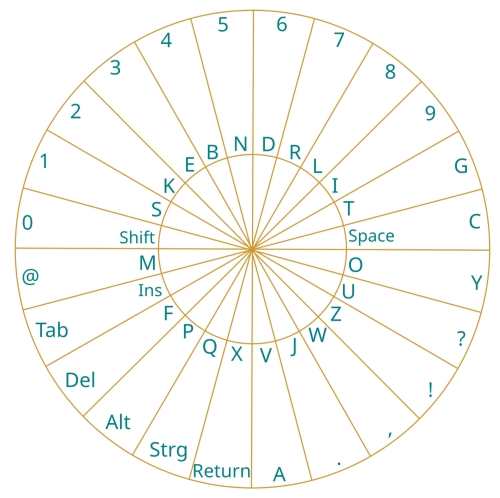
Examples
Example problem formulations for working with Skydeas
In which new directions can a field be developed?
Examples: Which new research areas could be fruitful for skin cancer research? Which new painting techniques are conceivable?
Which transformations for product X or process Y are conceivable?
Examples: How can a battery be made more efficient? How can quality control in automotive engineering be integrated into the production of individual parts?
How can something familiar be rethought?
Examples: How can Lego be modernised without abandoning the basic principle of simple recombination? How can roads be replaced?
What could a new design look like?
Examples: How can Art Deco furniture be given a more modern look?
What different functions can a part take on in a system?
Examples: What else can an aeroplane wing be used for? How else can I use a brush for a picture?
These are some suggestions how new variants can be found with Skydeas.
So, start right here using it – it is really easy! Or, if you are still unsure how you can work with Skydeas, take a look at the video tutorial.
Case study example
The starting question is:
“How can input to a computer via a keyboard be improved?”
Other input options, such as dictation or scanning, are not considered. Thus, this example emphasizes the tremendous importance of asking the right question. The deliberately narrow question takes the keyboard as a given. A more open question, such as “What might a good human-computer interface look like?” leads to completely different solutions, such as the ideal solution of direct information transfer without a keyboard. Research is already being done on a thinking interface from brain to computer. And, of course, we are all familiar with voice input, which is faster by a factor of about 5.
The procedure is as follows. A “better input” could mean to be faster or easier. The keyboard itself could be more robust or smaller. With this problem formulation, we go through the elementary operations. From the multitude of ideas that emerged, just the top 5 are presented.
We start by choosing the most promising top category. In this case, moving, because typing is a movement. The elementary operations are read in order. If an association appears interesting, it is used to think longer about the problem, i.e., associations to the main components of the problem (the words of the problem formulation.) are searched for.
1. Elementary operation evolve (chain of thought: evolve – evolution – genetic algorithm – optimization – path optimization):
The paths between the keys are optimized, i.e., shortened. A genetic algorithm finds the optimal key arrangement so that as few finger movements as possible are necessary. For this purpose, a large text collection is broken down into individual letter sequences (e.g., er, en, le, eg, gt, ung). All frequencies of the letter combinations are added up. Based on this list, an optimization algorithm (e.g., a genetic algorithm) can find the optimal keyboard layout with minimized total travel ways.
2. Visualize (chain of thought: direct association to visualize the keyboard):
The keyboard can be visualized, that is, a virtual one replaces the physical keyboard. The projection can be made on any surface, whether on the desk, on the wall, or in the air.
3. Radiate (chain of thought: rays – star – star-shaped arrangement):
The letters are arranged in a star shape. An angular movement of the finger expresses the desired letter. A sensor measures the direction of a swiping movement – there is no longer a keystroke. The individual keys are located on a clock circle on the inside, in the middle, and on the very outside. Depending on the angle, the desired number of keys can be placed. A movement of the left index finger to 10.00 o’clock inside would be, for example, the letter E, to 11 o’clock outside the 4. Combined with idea 2, these movements could also occur in the air. A physical keyboard would no longer be necessary. Both variants would be space-saving.

Figure: Proposal of a keyboard as a circle with swipe movements
4. Abstract (chain of thought: abstract – from single letters – what summaries are possible?):
Phonetically similar letters are summarized on one key (e.g., p, b; t, d). This reduces the cognitive load of more phonetically oriented typing. Also suitable for strong dialect speakers! The correct word is calculated by software.
5. Reduce (chain of thought: reduce – reduce number of keys – differences between letters thus become problematic – difference due to pressure instead of labeling):
The number of keys is reduced to 10 so that key search movements are no longer necessary. All letters are selected by different pressure (light, medium, strong).
Now that you know how it is done – contact us for working with you on your problems, starting with a free first session or try it for yourself here.